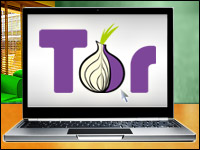
Open source software is poised for rapid growth in enterprises over the next 12 months, but cost is no longer the primary driver behind open source adoption.
That’s according to a new study from global consultancy Accenture, which based its findings on interviews with 300 executives at organizations in the United States, the United Kingdom and Ireland with annual revenues above US$500 million.
More than two-thirds of the organizations surveyed anticipate increased investment in open source software in 2010, with more than a third expecting to migrate mission-critical software to open source in the next 12 months.
‘The Coming of Age of Open Source’
Quality and improved reliability were the top two reasons cited for the move to open source — named by 76 percent and 70 percent of respondents, respectively — while better security was named by 69 percent. Half of respondents cited a lower total cost of ownership.
“What we are seeing is the coming of age of open source,” said Paul Daugherty, chief technology architect with Accenture. “Through both our research and our work with clients, we are seeing an increase in demand for open source based on quality, reliability and speed, not just cost savings.”
That represents a significant change from just two years ago, when “uptake was driven mainly by cost savings,” Daugherty added. “We can expect to see this trend develop as open source continues to evolve and address even more business critical functions.”
Increasing Investment
Half of the organizations surveyed — representing both the private and public sectors — are fully committed to open source in their business, while almost a third say they are experimenting with open source, Accenture found.
Two-thirds of all respondents noted that they have a fully documented strategic approach for using open source, while another third are developing a strategic plan.
Of the organizations already using open source, 88 percent will increase their investment in the software in 2010 compared with 2009, according to the study.
When asked about the cost savings enabled by open source, the organizations surveyed cited software maintenance costs, initial software development time and initial development costs as the key contributing factors.
Whereas in 2009 just 20 percent of software developments were in open source, Accenture expects that figure to rise to 27 percent by 2013.
Giving Back to the Community
“This seems like validation of the wider market trend we’ve documented, which is increased adoption of and comfort with open source software,” RedMonk analyst Stephen O’Grady told LinuxInsider.
“Enterprises are so comfortable with open source, in fact, that they are actually beginning to contribute back,” O’Grady added.
Indeed, some 29 percent of the organizations surveyed are contributing their own solutions back to the community, Accenture found.
Among organizations not increasing their open source adoption, lack of senior management support, training and insufficient open source alternatives were the most frequently cited reasons, according to the report.
‘The Proof Is in the Pudding’
Open source’s growing popularity is not difficult to understand, noted Larry Cannell, a research director with Burton Group who studies open source solutions with a focus on collaboration, communication and content.
“If you look at it from an open source Web content management perspective, the proof is in the pudding,” Cannell told LinuxInsider. “There are hundreds of thousands or even millions of websites already running open source software; that’s a testament to its robustness, security and scalability.”
Looking ahead, those strengths could mean added pressure on vendors of proprietary software, Cannell noted.
“I think unless you’re a large software vendor, there’s going to be certain market segments in which you’ll get squeezed at the bottom end by low-cost open source software, and at the high end by what we call ‘superplatforms’ from Microsoft, IBM and Oracle.”
As a result, he predicted, “vendors in a number of segments are going to have to get creative and offer a lot of value to remain competitive between those two endposts.”




















































This story is well done. Thanks.
I find it interesting to note that Accenture was named by M$ Enterprise Partner of the Year on 2010-6-23. Most of their findings seem to be about servers and applications being created by business. There is little or no mention of use on client computers.
Their brochure on "OpenSource" has a picture of penguins on the front cover but never mentions Linux or GNU once. What’s with that? In another brochure on desktops, this is all the kind words they can say about GNU/Linux:
—
Linux on the Desktop. Following
a strong push from governments
in Europe and Asia, Linux has
gained some popularity as a desktop
platform. Although the promised
cost savings are appealing, Linux
remains a pioneering strategy, and
moving to Linux and supporting
applications may be daunting to
many organizations. Accenture can
help ensure that businesses and
governments understand the
benefits, challenges, risks and costs
of deploying Linux on the desktop.
—-
In the same brochure they describe wonderful results migrating 6.5 million desktops running that other OS. No wonder they are Enterprise Partner of the Year. They seem to be part of the sales team for M$.
One plus for them is a strong endorsement of thin clients (50% savings). With GNU/Linux, thin clients are absolutely amazing and save 50% on cost of acquisition but absolutely demolish cost of maintenance.